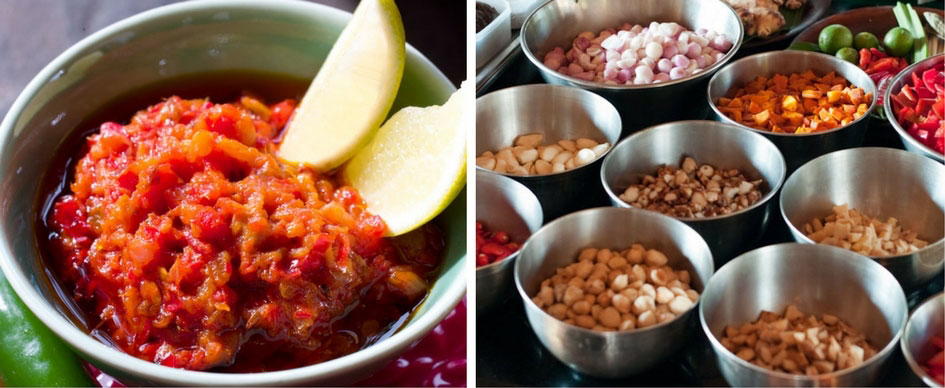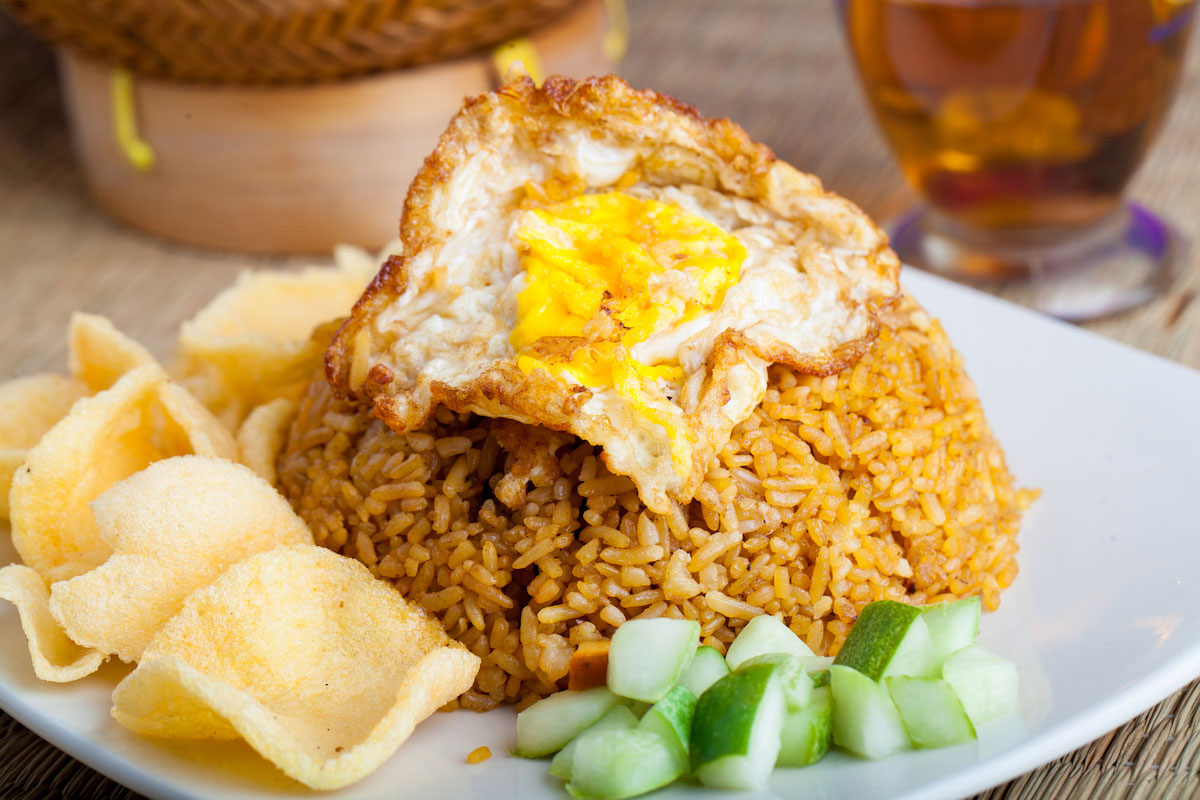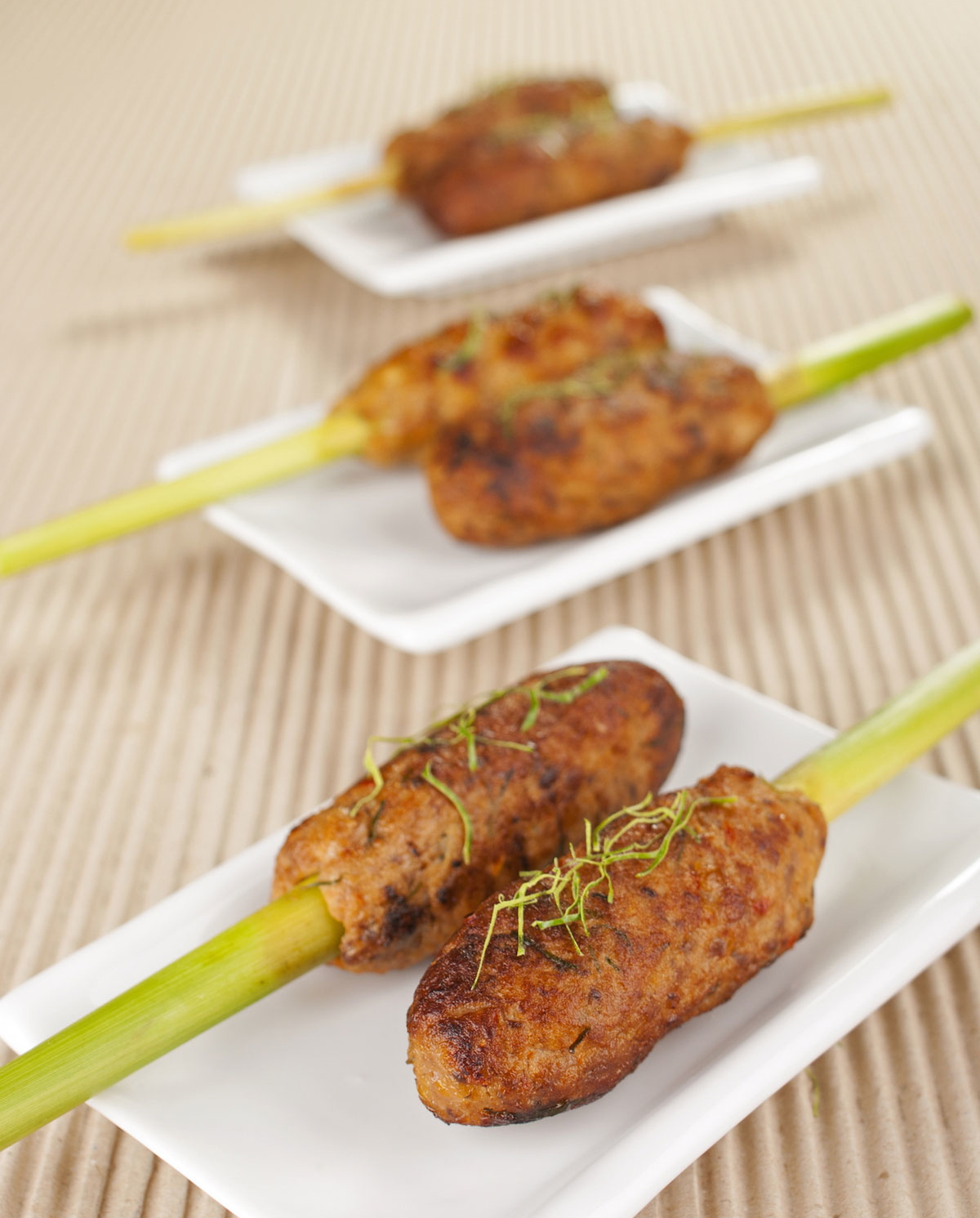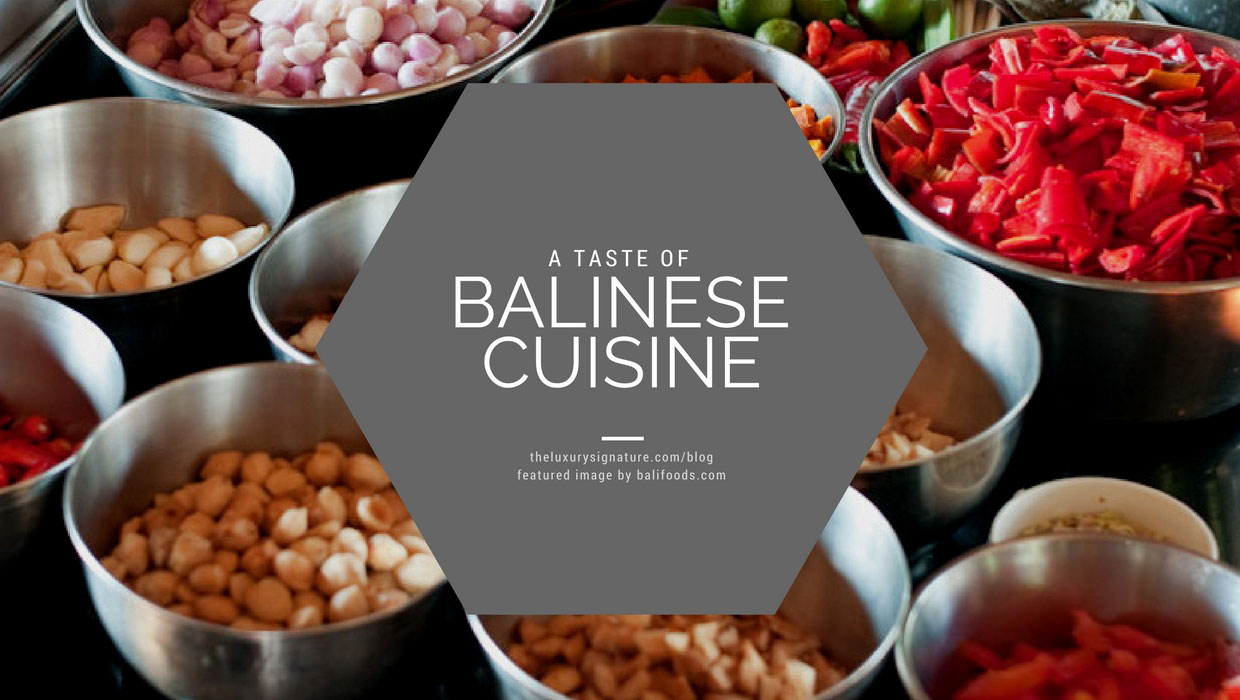As may be expected from a volcanic island, Balinese cuisine serves up more than a little fire in your belly with its use of aromatic spices and chili peppers. However, the spices are tempered by fragrant herbs which give Balinese dishes their rich yet delicate taste.
At the heart of many Balinese dishes is a wonderfully aromatic spice paste called Base Gede which literally translates as ‘big spice’. The paste combines a long list of spices including nutmeg, cloves, and cumin with strong root flavors such as garlic, shallots, and ginger. Adding the heat of birdseye chilis, the sweetness of palm sugar, and the sour of lemongrass with the saltiness of shrimp paste creates that a wonderfully distinct Asian flavor; one that is at once recognizable but defies definition and is ultimately craved the world over.
Sambal, which can be served cooked or raw, is a hot, spicy sauce. In Indonesia, there are literally hundreds of Sambal recipes to give meat, seafood, and vegetable dishes a gentle warmth or a real eye-watering kick.

Both Base Gede and Sambal sauces are prepared using a classic stone pestle and mortar to grind the ingredients and build up taste intensity, with each kitchen keeping its own combination of ingredients a closely guarded secret. Seafood caught in Bali’s Jimbaran Bay is grilled to succulent perfection and served with a hot and spicy Sambal or even a sweet and sour variation. Savored by the shore, this is the essence of Balinese food which is about enjoyment and fun,
Beyond the beaches and bounty of dive, surf, and luxury villa stays, it is Bali’s incredible balance of complex tastes that keeps visitors hungry for more; dishes that create depth and subtlety of flavors. The cultural diversity of Bali, which is primarily Hindu, includes Chinese and Indian influences which combine perfectly with authentic cooking techniques and the ingredients of traditional Indonesian fare. The effect is a truly appetizing taste of authentic Balinese cuisine.

Balinese dishes can be simplistic such as the flavorsome Nasi Goreng which at its most basic is fried rice with chicken or seafood and often served with a fried egg on top. Mie Goreng replaces the rice with noodles. Garlic, chili, and the strong flavors of salted fish, tamarind, and sweet soy sauce give the dish its moreish quality and it is cooked up just about everywhere in Bali from market food stalls to the island’s fine dining Balinese restaurants.
A more decadent dish is Babi Guling, a spit-roasted, spice-rubbed suckling pig. Another melt-in-the-mouth meat feast is the slow-cooked Bebek Betutu duck which is rubbed with spices and cooked in banana leaves to add to the velvety texture. Traditionally, the meat is stuffed with spices and actually cooked in a coal fire within the trunk of a banana palm.

Balinese cooking is not necessarily about indulgent dishes and Sate is a Balinese version of satay. The meat is minced and blended with spices before being moulded around a wooden skewer or more often a stalk of lemongrass or bamboo and grilled.
Even salads are given a fresh twist in Balinese cuisine with the cooked or raw vegetable ingredients of Gado-Gado smothered in peanut sauce. Meanwhile, Bali’s version of spring rolls is Tahu which is tofu or soybean curd which can be stuffed and fried. A similar snack is Tempe which is fermented soy too and often made into crackers.
Pepes and Tum are small banana-leaf-wrapped goodies that are steamed, boiled or barbequed. Secured with thin bamboo skewers, they are delicious parcels of pure Balinese culinary joy to be opened and devoured.







